 Brian Turner of the Kansas City Space Pirates pointed out a very interesting article to me, an article discussing the latest success from Boeing with their battlefield laser weapon system they are developing. From the article:
Brian Turner of the Kansas City Space Pirates pointed out a very interesting article to me, an article discussing the latest success from Boeing with their battlefield laser weapon system they are developing. From the article:
Boeing Fires New Thin-Disk Laser, Achieving Solid-State Laser Milestone
ST. LOUIS, June 03, 2008 — The Boeing Company [NYSE: BA] fired its new thin-disk laser system repeatedly in recent tests, achieving the highest known simultaneous power, beam quality and run time for any solid-state laser to date.
In each laser firing at Boeing’s facility in West Hills, Calif., the high-energy laser achieved power levels of over 25 kilowatts for multi-second durations, with a measured beam quality suitable for a tactical weapon system. The Boeing laser integrates multiple thin-disk lasers into a single system. Through these successful tests, the Boeing team has proven the concept of scalability to a 100-kilowatt-class system based on the same architecture and technology.
The system they tested, as noted is ~25 kW of power. For reference, the system which TRUMPF is supplying to 5 contestants in this year’s Space Elevator games is 8 kW, or about 1/3 the power. It is no wonder that safety is such a concern in this year’s games (as it was last year, too).
As another point of reference, in the Edwards-Westling book, ‘The Space Elevator’, the authors state that a 2.4MW laser will be needed to power a 20 ton climber. So a single 25kW unit now being demonstrated by Boeing is only 1% of the way there (though the 100kW future unit discussed in the article would supply about 4% of the power needed for a 20 ton Climber).
Chemical lasers, by comparison, can be found in the MW range and it was my assumption that these are the lasers being targeted for use in a future space elevator. I emailed Dr. Brad Edwards to check my assumptions about this new solid-state laser and he replied:
“This is the laser I was talking to them about a few years ago. At that time they said it was basically a matter of money. But if they have the 100kW laser as they state ‘in the coming years’ then that means we need to purchase 24 of these and point them all at the climber (through a large mirror or set of mirrors. Their size and how they run would make this pretty straight forward and the plan I have had in mind for some time. This is actually pretty promising.”
Surprised, I asked him specifically about the preferability, if any, of this solid-state laser over the chemical ones. He replied:
“The solid-state ones are more efficient, much easier to use, much smaller and less costly in the end – I like them much better. Yes, having multiple small lasers is better from a redundancy aspect though it can be more challenging in operations – best is to have a small number but enough that if a few fail you can still run.”
So, this new laser development IS a very promising one and is yet one more ‘brick in the road’ (or should I use the analogy ‘fiber in the tether’? 🙂 ) on the way to a Space Elevator…


 On Sunday, July 6th, Dr.’s Bryan Laubscher and Martin Lades will be joint guests on Dr. David Livingston’s The Space Show. From the show notes:
On Sunday, July 6th, Dr.’s Bryan Laubscher and Martin Lades will be joint guests on Dr. David Livingston’s The Space Show. From the show notes: In the
In the  This is cool. The Discovery Channel has put together a select
This is cool. The Discovery Channel has put together a select  A couple of months ago, we heard the “Mobile Home Astrophysicist’s”
A couple of months ago, we heard the “Mobile Home Astrophysicist’s” 
 At KansasCity.com, author Jonathan Bender wrote an
At KansasCity.com, author Jonathan Bender wrote an  Brian Turner of the
Brian Turner of the 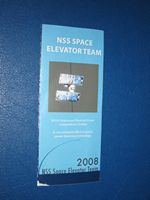
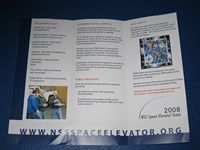
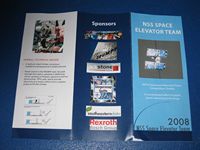
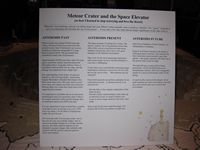
 I enjoyed attending this year’s
I enjoyed attending this year’s 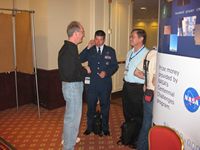
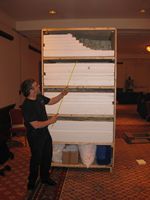
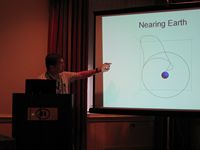
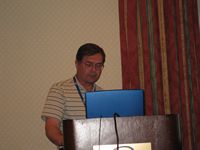

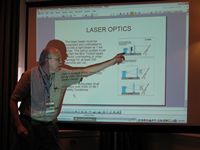
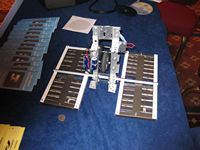
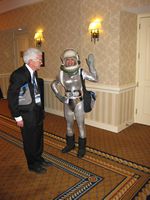
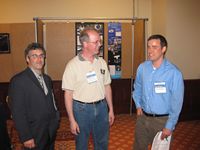
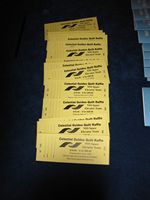
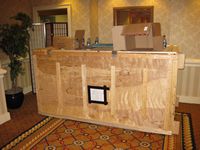
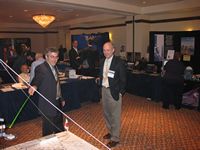
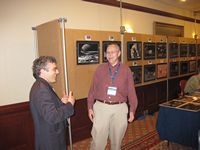
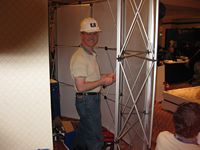
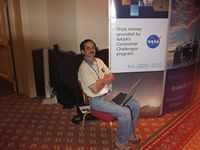
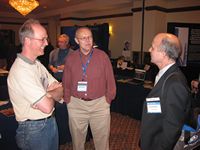
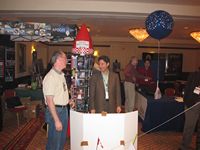
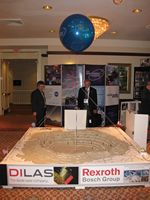
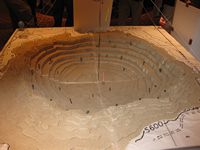
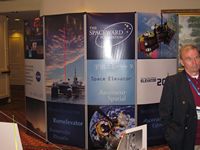
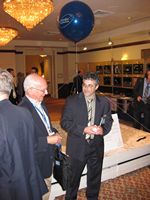
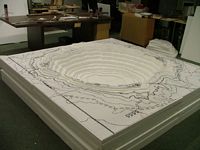

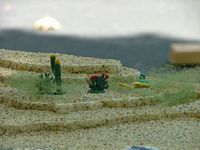
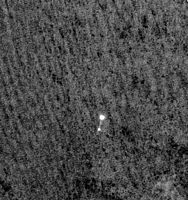
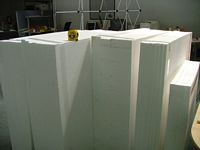
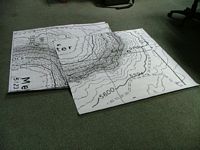
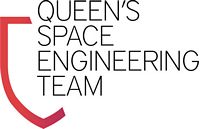 On the Queen’s Space Engineering Team
On the Queen’s Space Engineering Team 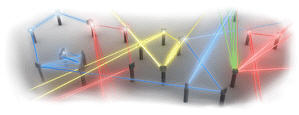 If you go to the
If you go to the 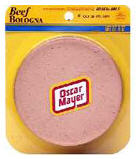 I ran across an interesting
I ran across an interesting  Here’s mine: There are eleven, individually-wrapped slices of Kraft American cheese in one inch. We want them individually wrapped, of course, for sanitary purposes and to make repairs to the “Cheesevator” easier. A kilometer contains 39,370.0787 inches (have to be exact, of course). One hundred thousand kilometers, then, would contain 3,937,007,870 inches. At 11 slices to the inch, this means that a Cheesevator would contain 43,307,086,570 slices of individually wrapped Kraft American cheese. Each slice of this cheese contains 70 calories and 5 grams of fat giving us a grand total of over three trillion calories (3,031,496,059,900 to be exact) and over two hundred billion grams of fat (216,535,432,850 grams to be exact).
Here’s mine: There are eleven, individually-wrapped slices of Kraft American cheese in one inch. We want them individually wrapped, of course, for sanitary purposes and to make repairs to the “Cheesevator” easier. A kilometer contains 39,370.0787 inches (have to be exact, of course). One hundred thousand kilometers, then, would contain 3,937,007,870 inches. At 11 slices to the inch, this means that a Cheesevator would contain 43,307,086,570 slices of individually wrapped Kraft American cheese. Each slice of this cheese contains 70 calories and 5 grams of fat giving us a grand total of over three trillion calories (3,031,496,059,900 to be exact) and over two hundred billion grams of fat (216,535,432,850 grams to be exact).


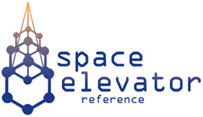 THE original
THE original 

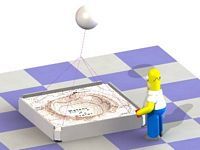


 Dr. Brad Edwards, the ‘father’ of the modern-day conception of the Space Elevator, has written a very interesting article in the latest issue of the TRUMPF newsletter (available
Dr. Brad Edwards, the ‘father’ of the modern-day conception of the Space Elevator, has written a very interesting article in the latest issue of the TRUMPF newsletter (available 
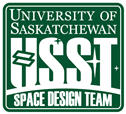 As has been
As has been 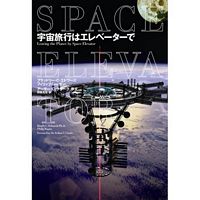
 We have a new competitor into this year’s Climber/Power-Beaming event,
We have a new competitor into this year’s Climber/Power-Beaming event,  “As for discussing space travel, Dr. Kaku pointed out the problem of the high cost of space access. He was asked if we needed breakthrough advanced propulsion to give us low cost space access, could we do it through the space elevator which he talks about in his book, or could space tourism or space solar power be an economic driver leading to a significantly higher launch rate which would enable commercially attractive launch prices.”
“As for discussing space travel, Dr. Kaku pointed out the problem of the high cost of space access. He was asked if we needed breakthrough advanced propulsion to give us low cost space access, could we do it through the space elevator which he talks about in his book, or could space tourism or space solar power be an economic driver leading to a significantly higher launch rate which would enable commercially attractive launch prices.”